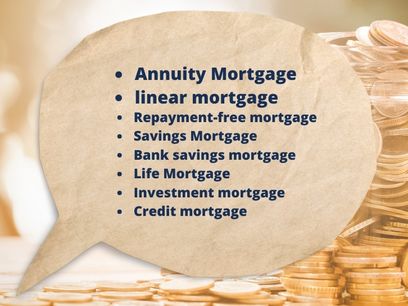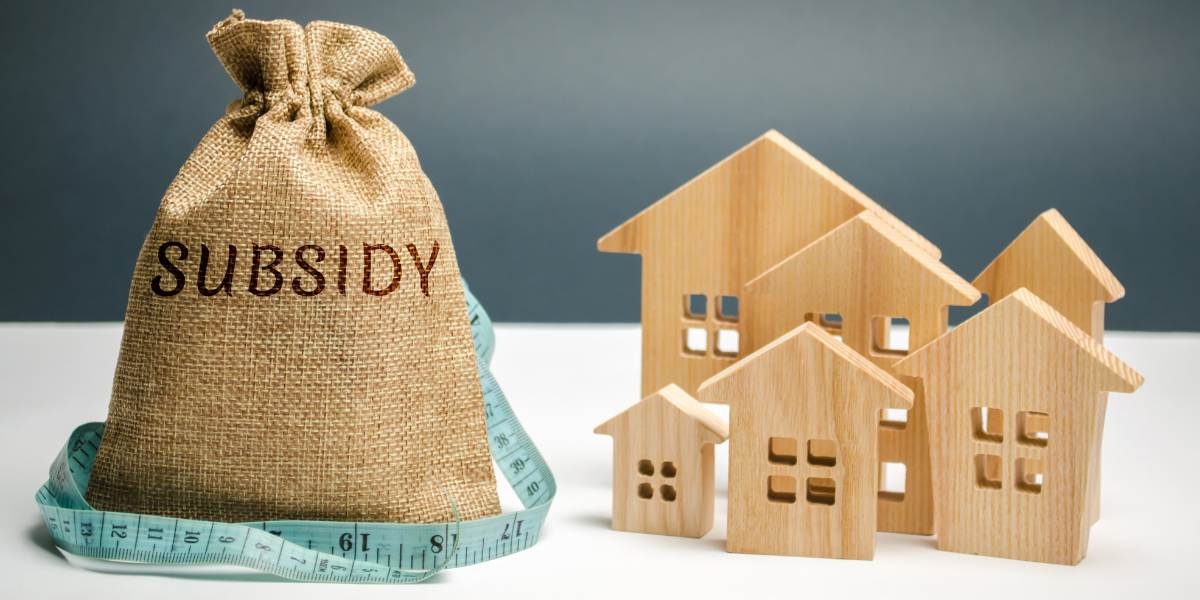A linear mortgage is a type of mortgage loan where the repayment of the borrowed capital is spread evenly over the life of the loan. In other words, each monthly payment consists of a fixed amount of loan repayment along with interest charged on the remaining balance of the loan.
> Read more about the different types of mortgages, such as a drawdown, credit, annuity or rental mortgage.
How does a linear mortgage work?
A linear mortgage can be attractive to people who want their debt to be reduced quickly and are looking for stability in their monthly payments over time. It is important to note that initial monthly payments are higher than with other mortgage types, so it is important to make sure your financial situation is suitable for this payment structure. Read more about how a linear mortgage works below.
- Redemption: With a linear mortgage, the amount borrowed is evenly distributed over the life of the loan. This means you repay the same amount of capital every month.
- Interest calculation: Interest is calculated based on the remaining balance of the loan. At the beginning of the loan, when the outstanding balance is high, the interest payments are higher. Over time, as the loan amount is repaid, the interest payments decrease.
- Monthly payments: The monthly payments in a linear mortgage are higher than in other mortgage types at first because you pay a significant amount in repayment in addition to interest. As the loan progresses, the repayment amount remains the same, but the interest rate decreases, lowering the total monthly payments over time.
- Total interest cost: Because the repayment is constant and the outstanding amount of the loan gradually decreases, the total interest cost with a linear mortgage is generally lower than with other mortgage types.
As always, it is essential to thoroughly understand the terms of the mortgage before taking out a loan.
Interest and repaying
A linear mortgage is repaid by paying a fixed amount of repayment of the borrowed capital over the life of the loan, in addition to interest calculated based on the remaining balance of the loan. Repayment is even, meaning each repayment is the same amount. Here is a step-by-step explanation of how a linear mortgage is repaid:
- First monthly payment: At the beginning of the loan, the remaining balance of the loan equals the full amount borrowed. The first monthly payment includes both interest and a repayment amount. The repayment amount is calculated by dividing the total amount borrowed by the number of payment instalments.
- Following monthly payments: Each month, the repayment amount remains the same. Since the outstanding balance of the loan decreases with the amount of repayment you pay each month, the interest charged on that balance also decreases.
- Redemption amount remains constant: Throughout the life of the loan, the repayment amount remains the same. This means you repay the same amount of capital every month.
- The ratio between interest and repayment: While the repayment amount remains constant, the ratio of interest to repayment changes in each monthly payment. In the beginning, interest payments are higher because they are calculated based on the full amount borrowed. Over time, interest payments decrease as they are calculated based on a smaller balance.
- Last repayment: At the end of the term of the loan, the borrowed amount will be fully repaid. Your last monthly payment will therefore consist entirely of repayment.
In conclusion, a linear mortgage is repaid by paying a fixed amount of repayment over the life of the loan, with interest calculated based on the remaining balance. This results in a steady decrease in the outstanding amount of the loan and eventually in full repayment of the loan at the end of the term.
The terms and conditions
The terms and conditions for a linear mortgage can vary depending on the lender, region and other factors. Here are some general aspects and conditions that often apply to a linear mortgage:
- Maturity: This refers to the period in which you have to repay the mortgage loan in full. This can vary, usually between 10 and 30 years, but the term can be shorter or longer, depending on your choice and availability with the lender.
- Interest rate: The interest rate determines how much interest you pay on the loan. This can be a fixed rate that remains constant throughout the term or a variable rate that can change based on fluctuations in market interest rates or another financial index.
- Monthly payments: In a linear mortgage, the monthly repayment amounts are the same and include a fixed amount of repayment of the borrowed capital. Since the repayment amount does not change, the monthly payments are predictable.
- Early repayment: Some linear mortgages offer the option of making additional payments to repay the loan faster. This can help reduce overall interest costs. Check if there are penalties for early repayment before doing so.
- Costs and fees: As with other loans, there may be costs and fees associated with taking out the mortgage. These can include closing costs, administration fees, mortgage insurance and more. Make sure you understand the full list of fees before agreeing to the mortgage.
- Mortgage insurance: Depending on the amount borrowed and the equity in the property, the lender may require you to take out mortgage insurance to cover their risk in case of default.
The specific terms of a linear mortgage can vary from lender to lender, so it is essential to thoroughly understand the terms of the mortgage you are considering before making a decision. Read more about applying for a mortgage.
Difference from a credit mortgage
A linear mortgage and a credit mortgage are two different types of mortgage loans with different features regarding repayment and usage. Here are the main differences between the two:
Redemption structure
– Linear mortgage: In a linear mortgage, you pay a fixed amount each month in repayment of the borrowed capital, in addition to interest calculated based on the remaining balance of the loan. Repayment is even, meaning each repayment is the same amount. As a result, the outstanding balance of the loan gradually decreases.
– Credit mortgage: A credit mortgage is a flexible loan that acts as a line of credit. You have access to a set credit limit that you can withdraw and repay according to your needs. Repayment can be variable depending on how much you have withdrawn. You pay interest on the amount withdrawn.
Monthly payments
– In a linear mortgage, monthly repayments are fixed and consist of a fixed amount of capital repayment and interest. These payments remain the same throughout the life of the loan.
– With a credit mortgage, the monthly payments can be variable depending on how much you have withdrawn from the line of credit. You only pay interest on the amount withdrawn, which means your monthly payments can be lower if you have withdrawn less.
Flexibility
– A linear mortgage offers less flexibility because the monthly repayments are fixed and cannot be adjusted.
– A credit mortgage offers more flexibility because you can withdraw and repay money according to your needs, similar to a line of credit. This can be useful if you expect your financial situation to vary over time.
Interest
– With a linear mortgage, you pay interest on the remaining balance of the loan, which gradually decreases as you repay.
– With a credit mortgage, you only pay interest on the amount you withdraw. If you withdraw more, your interest burden will increase.
The main difference between a linear mortgage and a credit mortgage lies in the structure of repayments and the flexibility in use and repayment. It is important to fully understand which type of mortgage best suits your financial needs and goals before making a decision.
Types of mortgage advisors
Different types of mortgages
Grants and subsidies for a mortgage
💡 Need help with finding a mortgage advisor?
We provide you with free help and advice for the best mortgage advisors.




